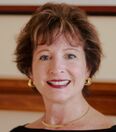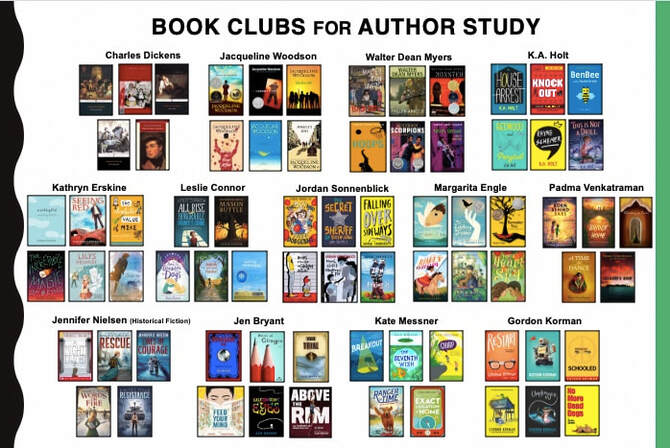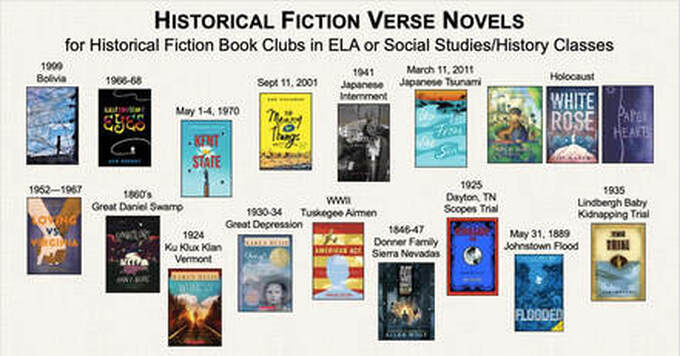- INTRO/SITE CONTENTS
- MY PUBLICATIONS
- BLOG
-
BOOK REVIEWS
- PLANNING A DIVERSE LIBRARY
- Surviving Loss & Abandonment
- Historical Fiction
- Sports Fiction
- Justice & Change Seekers
- Mental Health & Neurodiversity
- Latinx & Hispanic Characters
- Bullying
- Acts of Kindness
- STEM Novels
- Identity & Self-Discovery
- Winter Holidays
- Contending with the Law
- Family Relationships
- Stories of Black History
- Read Across America
- Verse Novels
- Immigrant/Refugee Experience
- Strong Resilient Girls in Literature
- Asian, Asian-American
- Novels featuring Contemporary Jewish Characters
- Multiple Voices & Multiple Perspectives
- Short Readings: Stories, Essays & Memoirs
- Graphic Novels
- Physical Challenges & Illness
- Characters Who are Adopted or in Foster Care
- Love & Friendship
- Memoirs
- STRATEGY SHORTS
|
Text Clubs have many advantages which I have written about in the introduction to the Book Reviews section. Besides Nonfiction or Informational Book Clubs, Short Story Clubs, Poetry Clubs, Folklore Clubs, Article Clubs, and even Textbook Clubs, all of which are described in Talking Texts: A Teacher’s Guide to Book Clubs across the Curriculum, Novel Book Clubs are the most familiar type of Book Club and can be organized in a variety of ways. These are some suggestions for choosing books for Book Club reading. AUTHOR STUDY BOOK CLUBS As I share in Talking Text, my first book club was a matter of necessity. It was 1989 and, other than my mother’s monthly book club, I had not heard of the practice used in the classroom but in my first job which was that of a 11-month permanent substitute, my curriculum guide for Senior Honors stated that I was to teach a Dickens novel. Looking around the classroom I found about 5 copies of one novel. Going to the library, I found a few copies of other Dickens novels. Searching, borrowing, and purchasing, I came up with 5-6 copies of five novels written by Charles Dickens. And so my first Book Club adventure began. I taught background on the author and his times, the students each chose a novel to read, and Author Study Book Clubs were formed. After each group read and discussed their novel, they prepared a creative presentation to the class. In that way, students read one novel but learned about five. Author Study Book Clubs can be structured in a variety of ways. Then teacher can give background on the author or students can individually or later, in book clubs, study different biographical facets of the author, including time period, geography, cultural background, other publications, etc. which they will share with their clubs and later with the class. The class can read a whole-class text written by the author, ideally a short story. Or the Book Clubs can choose books based on teacher book talks and/or looking at the covers and skimming a few pages of each book. [See Talking Texts for more in-depth information on forming book clubs.] As with the Dickens Book Clubs, each book club read and holds 4-5 meetings to discuss their reading and then prepare a presentation to the class in which they include their observations on not only the content by the author’s craft. Books clubs can compare and contrast the author’s writings as a class or in Inter-Book Clubs where one member of each book club meets in a group to compare and contrast and report their findings. How to choose an author? The most effective is to choose authors who have published at least 5 texts. Ideally the author would have published a short story that the class and read together to begin and build on, but that is rarely the case. I find that it is effective to find authors who write in different genres, such as Walter Dean Myers who has published memoir, historical fiction, realistic fiction, “street life” fiction, sports fiction, and romance, as well as collections of short stories (which are good for slower, more emergent readers who may not be able to finish an entire novel in the same time period as their peers. Also it is best to choose an author who has written in a variety of reading levels. More rare but effective would be to choose an author who has written in a variety of formats, such as prose, verse, graphic, and multi-formatted, such as Laurie Halse Anderson who wrote the graphic novel Wonder Woman: Tempest Tossed but her novel Speak was re-written as in graphic form. Or an author such as Jennifer Nielsen who has written historical novels taking place in different time periods. If you cannot read the titles, look up the author on Goodreads for titles and synopses.  FORMAT BOOK CLUBS In Format Book Clubs book club members read books written in the same format, such as verse novels, graphic novels, epistolary novels (or now, novels written through letters, emails, and/or texts) or, gaining in popularity, multi-formatted novels. Format Book Clubs allow teachers to teach focus lessons on the format. VERSE NOVEL BOOK CLUBS For example most novels-in-verse are written in free verse, so the teacher can teach that format but also poetic devices such as figurative language of all types. I think the power of free verse is in the line break choices. I always described line breaks as an eye-pause, when reading it is short than a comma but your eye is forced to pause and notice a particular word or phrase. Discussion can be held on why the author chose to break on that word. Stanza length, which usually varies, inspires other reflective conversations. Verse novels are written in most genres, such as historical fiction, memoir, biography, humor, realistic fiction. Some authors only write in verse format; others write in a range of formats. Such novels are written by culturally-diverse authors on diverse topics, featuring diverse characters and settings. Many verse novels are written in a variety of poetic forms which lead to lessons or study of the different types of poetic formats. Leslea Newman’s October Mourning: A Song for Matthew Shepard is written as 68 poems about Matthew Shepard and his murder. A range of emotions is shared through a variety of poetic styles: free verse, haiku, pantoum, concrete, rhymed, list, alphabet, villanelle, acrostic, and poems modeled after the poetry of other poets, thereby, not only introducing to the “what” of those formats but the “why.” But most importantly, novel-in-verse is a text format which engages readers for divergent reasons:
GRAPHIC BOOK CLUBS It is important that teachers teach visual literacy. Citizens of the world are bombarded with images daily—in the news, as advertising, body language and facial expressions. Reading and studying graphic text allow readers to learn to read visual clues. The advantages of holding Graphic Novel Clubs are that, besides engaging many reluctant readers, artistic students will learn to appreciate the congruity of art and text and the graphics make it possible for our ELL readers to interpret a text. I have not read many graphic novels but teachers/librarians can facilitate Graphic Book Clubs with an assortment of graphic texts as shown or hold Graphic Historical Fiction Book Clubs or Graphic Memoir Book Clubs. CULTURAL BOOK CLUBS Besides advocating for diverse cultures to be represented in Book Club choices, Cultural Book Clubs can be developed around the cultures of the author, characters, or setting. Pictured are some examples. It is vital that readers see their cultures reflecting in stories they read as well as using story as passage into other cultures. This type of Book Club can lead to research into cultures which Clubs will then present to their peers who may be reading novels set in, or featuring characters representing, other cultures.  GENRE BOOK CLUBS Genre Book Clubs can facilitate students exploring a genre and to see the variety of topics that can be covered by a genre. When planning a genre study, it is effective to include diverse authors and/or characters and formats—not only prose, but verse, graphic, and/or multi-formatted. Genre Book Clubs can be created around Historical Fiction, Sports Fiction, Memoir, Mystery, Science Fiction, Fantasy, Dystopian, Magical Realism, etc. Historical Fiction novels can be read and discussed in Social Studies/History classes or in ELA/English classes or as part of interdisciplinary units in both. One suggestion is that in a Social Studies class, each Historical Fiction Book Club reads a novel from a different time or place that will be covered in the curriculum that year, and, when that time/place is being covered in class, the Book Club makes their presentation to the class or all Book Clubs present at the end of the year as a review. STEM BOOK CLUBS Not really considered a genre are Disciplinary Book Clubs—math, social studies, science, health, art, music. The novels pictured include science and math connections and can be read in those two classes or in ELA or English classes with collaborative interdisciplinary lessons. Some of them, such as Fever 1793, can be employed across the curriculum. THEMATIC BOOK CLUBS
The most obvious organization for Book Clubs is Thematic or Topic Book Clubs and most of what I share in Facebook posts and in the Book Reviews sub-sections of this site are Thematic Book Clubs, such as those posted under the Book Review section: Teen Justice & Change Seekers and Surviving Loss. Other topics or themes around which I have planned Book Club reading are
MONTHLY BOOK CLUB TOPICS I wrote a guest-blog for the Western Pennsylvania Council for Teachers of English (WPCTE) on monthly Book Club topics that are based on National and International Days and Holidays, “2022 MG/YA Book Recommendations Month-by-Month.” Part 2 of that blog includes a link to Part 1. These suggestions for ways to choose books for Book Club reading gives the readers a commonality that they can discuss across the Clubs and across the class. When Book Clubs have something—characters, format, genre, topic—they can compare and contrast, one student from each Book Club can meet together, conducting discussions in these Inter-Club meetings, giving even more meaning to the reading. See these ideas described, developed, and extended and even more Book Club ideas and strategies in Talking Texts: A Teacher’s Guide to Book Clubs across the Curriculum.
3 Comments
10/8/2022 10:50:59 pm
So many wonderful club lists with so many great books! If I may suggest another -- I'd love to see a club list of novels about girls who play sports. All these years after Title IX, this is still a subject area that's underrepresented in young people's literature. Thanks!
Reply
6/12/2023 04:50:25 pm
The big list of clubs helps me choose the specific genre for my book; by this, my book goes to the target audience. Thank you for your help to increase my knowledge.
Reply
12/7/2023 03:05:15 pm
Thank you for letting me know that diverse authors and/or characters and formats must be included in a genre study. My bookworm friend wants to opt for an online book club subscription. I should advise her to go for it to explore all kinds of genres.
Reply
Leave a Reply. |
AuthorSee "About Lesley" Page Archives
June 2024
Categories
|
















 RSS Feed
RSS Feed